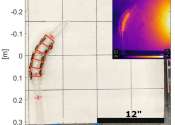New sodium, aluminum battery aims to integrate renewables for grid resiliency
A new battery design could help ease integration of renewable energy into the nation's electrical grid at lower cost, using Earth-abundant metals, according to a study just published in Energy Storage Materials. A research ...
Feb 7, 2023
0
22









